Kīpahulu: one-square mile tropical paradise
3 Comments
Haleakalā National Park protects two areas of the island of Maui. The contrast between them always amazes me. The nearly freezing temperatures, barren lava soil, and sea of clouds of the 10,000-foot-high Haleakalā Crater couldn’t be more different from the paradisiacal tropical pools, jungle, and waterfalls found at the ocean’s edge at Kīpahulu. Despite its small extent of slightly more than one square mile, Kīpahulu has so much to offer.
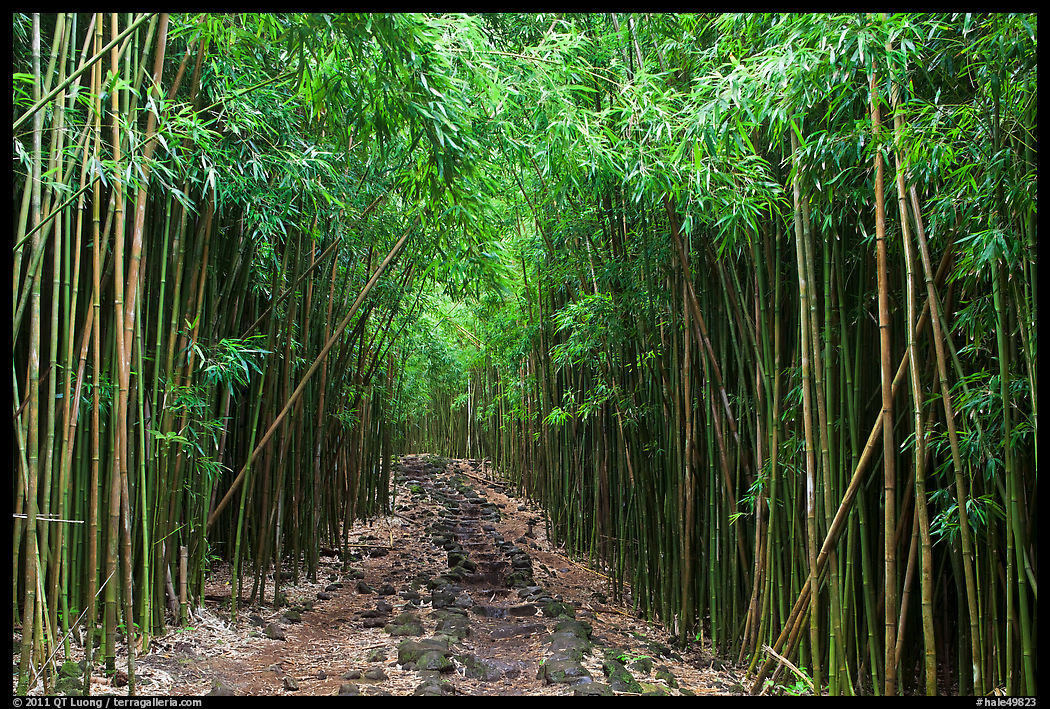
Haleakalā summit and Kīpahulu area lie only a dozen miles away as the crow flies, but several hours by road. That is why many visitors to Haleakalā National Park miss that outstanding area. Most who make it there drive the Hana Highway on the north side of the island, a very scenic and twisting road whose 60 miles take about 3.5 hours to drive – in addition to one hour from the summit. The most direct route between Haleakalā summit and Kīpahulu is the less traveled Pi‘ilani Highway in the south, which has a rough, unpaved section that is passable by regular cars in dry weather.
Ohe‘o Gulch
Ohe‘o Gulch is famed for its Seven Sacred Pools (a purely made-up promotional name, as there are more than seven pools and they have never been sacred), which are a set of beautifully tiered pools situated in a lush environment. I closed my eyes to take in the fragrance of the tropical vegetation. During the day, on my first visit in the early 2000s, swimmers often swarm the pools, but at sunrise, I felt so contented to have this lush paradise to myself. To find upstream views in which the waterfalls are visible, I hiked the 0.5-mile Kuloa Point loop trail until I found a viewpoint above the pools. I set up the camera well before sunrise and waited for the moment when the light from the eastern horizon was strong and directional, but before the sun would rise, as the contrast and cast shadows would detract from the scene’s serenity. Eliminating the bright skyline focused the attention on the pools.
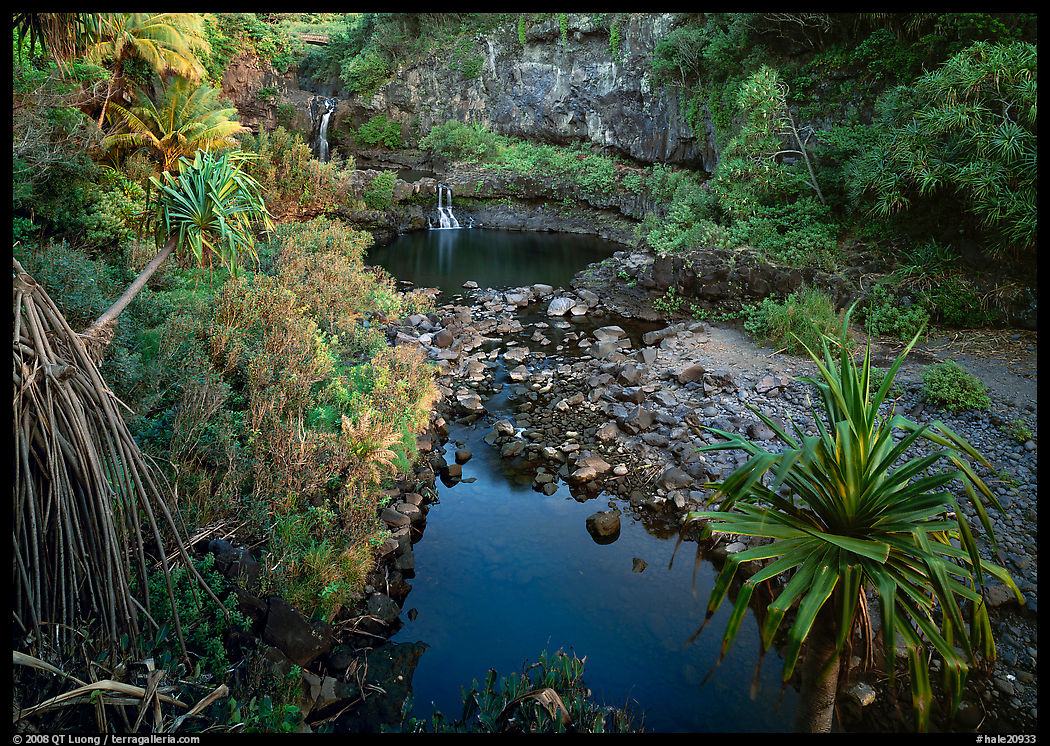
The pools that form the Seven Sacred Pools are separated by waterfalls. In the past, visitors had great fun jumping from one pool to the next. However, following accidents and lawyer-encouraged lawsuits, the NPS has banned all jumping. Since the highest settlement was related to a flash flood, if there is even a remote chance of rain in the mountains (quite common given the area’s lushness), the NPS prohibits not only swimming but also all access to the pools. On my first visit to the area, the flow was low. I used a multi-second shutter speed to render them as a smooth and substantial ribbon. On a return trip, the volume was considerably higher. In order to convey a sense of the flow’s power, I used a shorter shutter speed of 1/15s that retained some texture in the water and suggested rushing water.
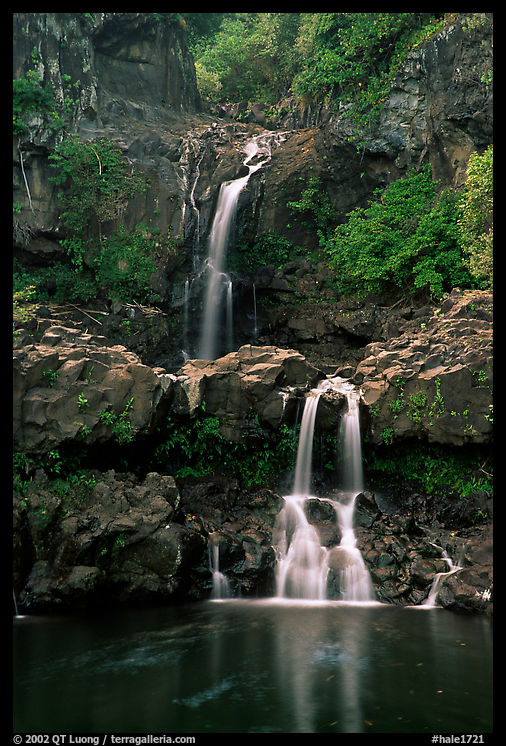
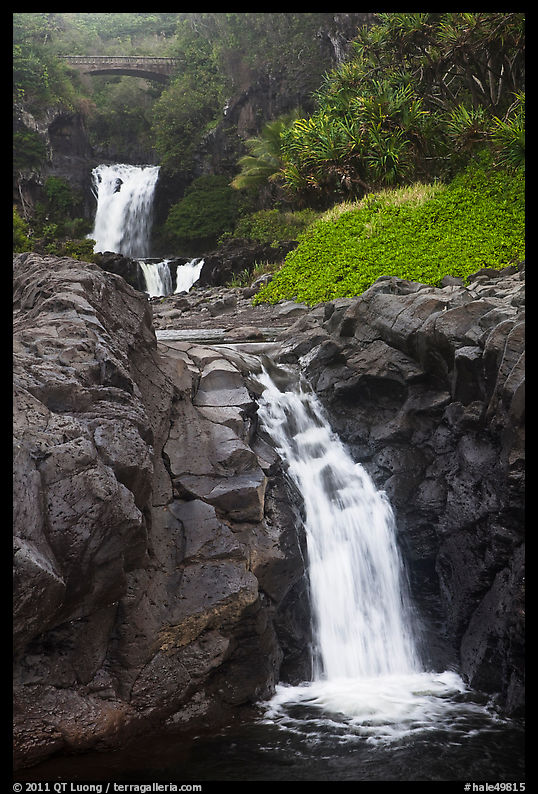
With all this water, it would be easy to overlook the vegetation, which was unlike anything I’d seen before. The gulch is home to numerous Pandanus trees. Their large fruit resembles a pineapple, but their roots forming a pyramidal tract are even more striking, especially when emerging from a thick mat of the long leaves – traditionally used for basket making, clothing, and even shelter. The monochromatic character of the photograph emphasized all the textures.
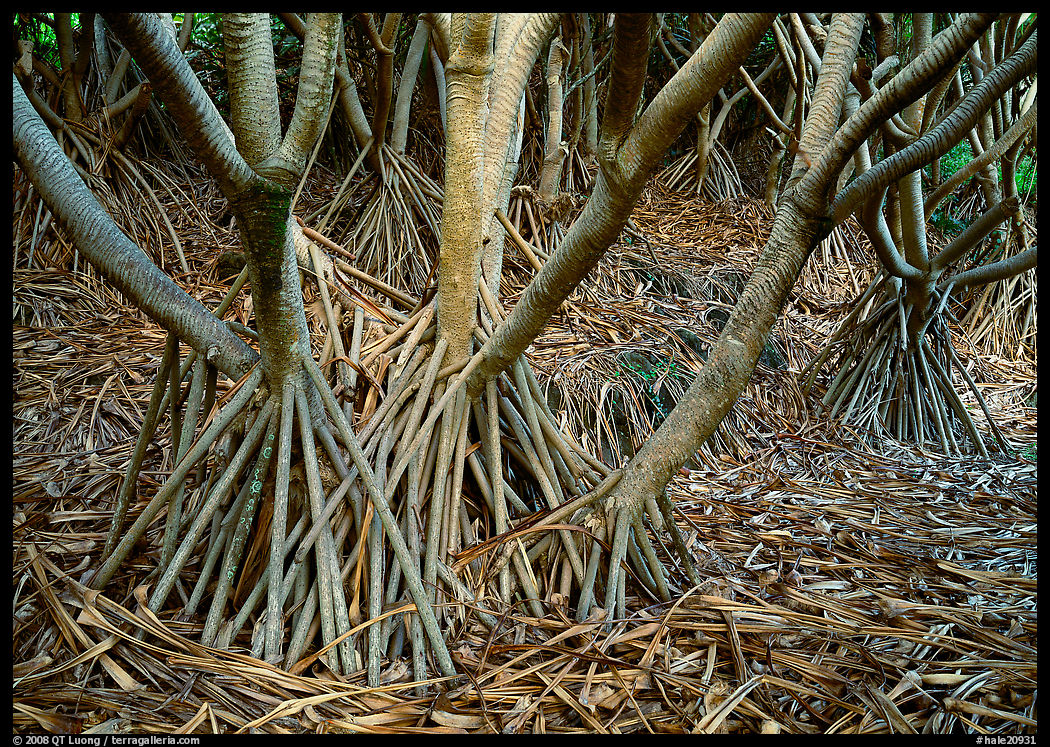
The Coast
The second attraction of the area is the coast. With clouds portending a possible brilliant sunrise, I sought a low position to include more sky in the composition. I scrambled down the rocks into the gulch. On that day, the tide was high, so the beach was hidden. I stayed back in the gulch, using the stream draining into the ocean as a leading line for the composition that is all about extreme contrast of light.
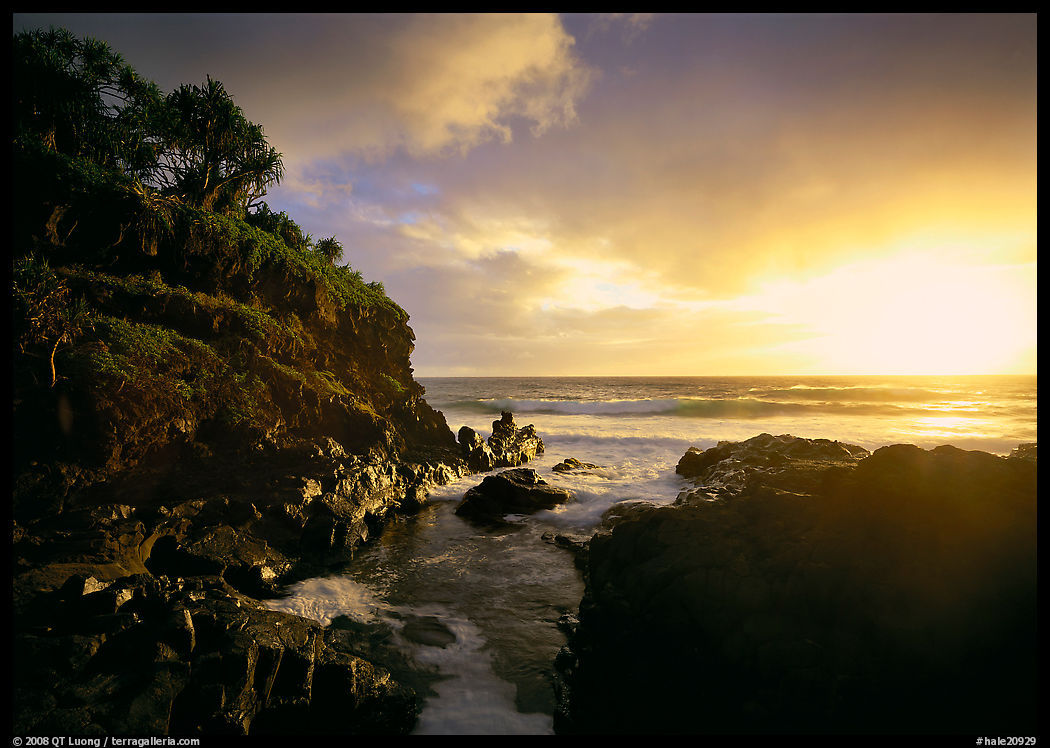
On another visit, the tide was low, allowing me to set up on the black sand beach at the mouth of the gulch. Another difference was the dark stormy sky that mostly blocked the sun. I looked for a composition of turbulent water to match its brooding and tumultuous character. With no direct sun, the image is more about textures and subtle light effects such as the reflection of bright clouds into the waves. After experimenting with several shutter speeds, I found that 1/6s (made possible by using a 4 f-stop ND filter) worked well to convey the power of the ocean with just enough blurring to suggest motion.
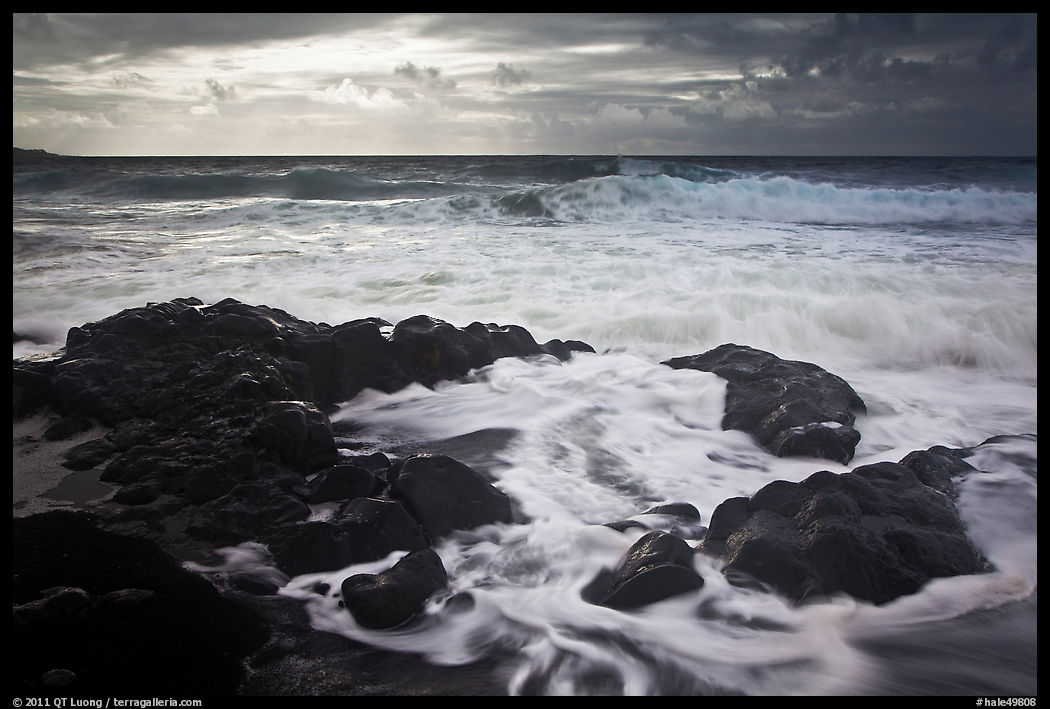
In the early morning, I looked for views of the ocean and entire shoreline from a higher viewpoint on the bluff. When you think about tropics, images of the turquoise ocean gently lapping against a sandy beach may come to mind, but waves always break powerfully there, creating foamy water. I timed the image for a breaking wave to create a diagonal leading line.
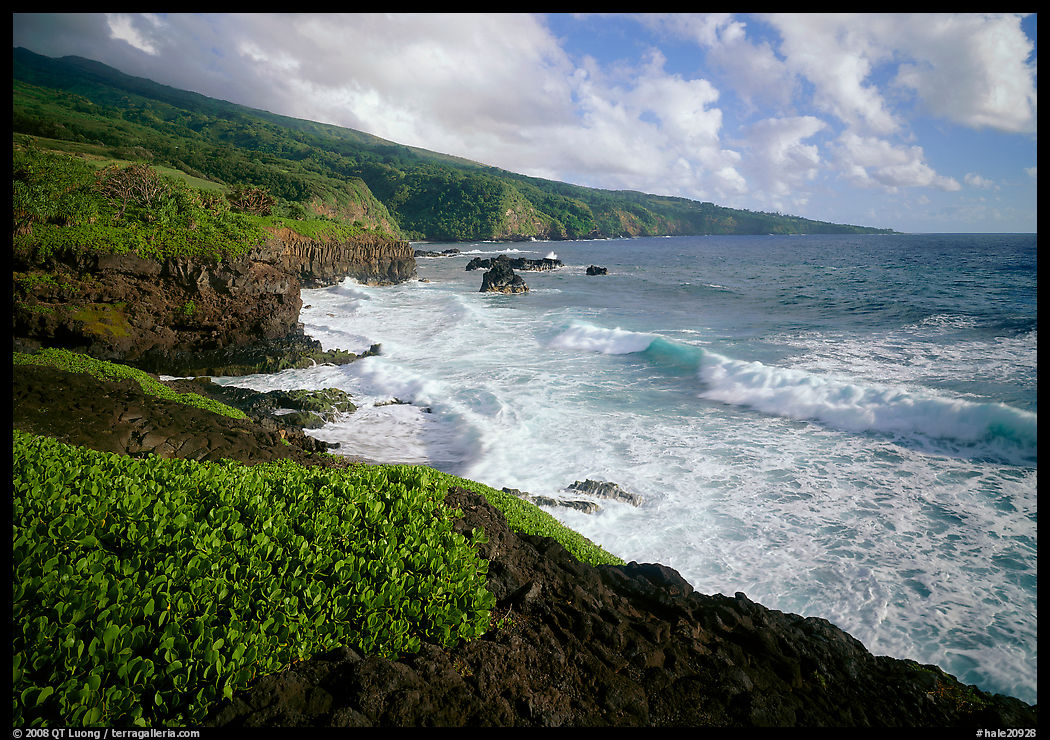
Pointing the camera in the opposite direction, I established a composition with the tropical forest and the lush slopes of the Haleakala Crater in the distance. I carefully observed the dance of the light on the slopes as clouds changed in quick succession and made the photograph when shadows created contrast and delineated the ridges. I had been standing on almost the same position as for the previous image, and this was just a few hundred yards from the pools. What a spot!
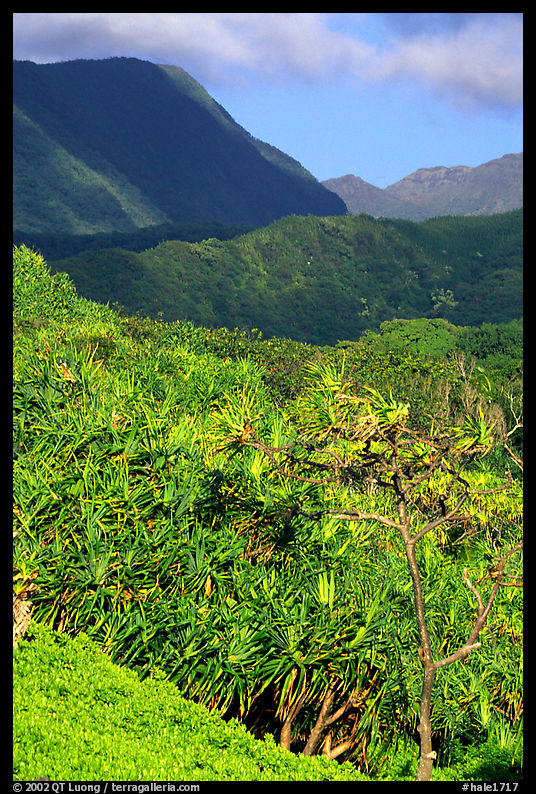
Pipiwai Trail
The Pipiwai Trail (4 miles round-trip; 600-foot elevation gain) is possibly the best hike on the whole island of Maui, because of the variety of tropical sights encountered along the way. You will first find a view of Makahiku Falls plunging into the pool below you. This was photographed on my second visit, when the water flow was high.
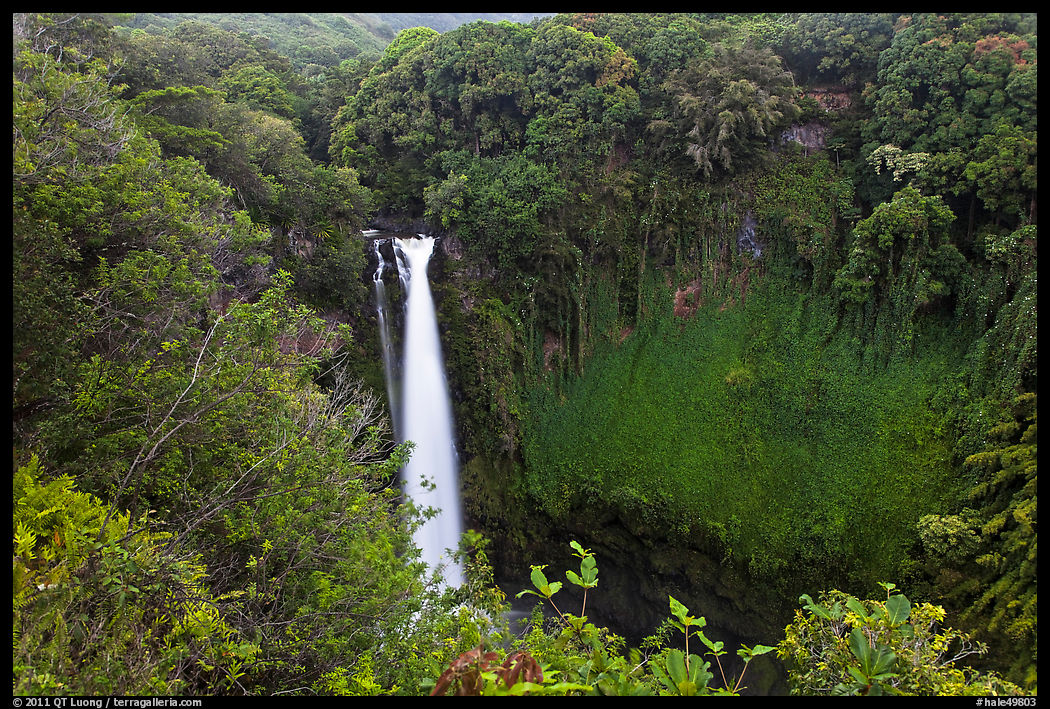
On my first visit, the waterfall was just a trickle, and as a result my favorite image was of the pond below. Photographing it without the waterfall is not a bad idea anyways, as it allowed for a bit of mystery.
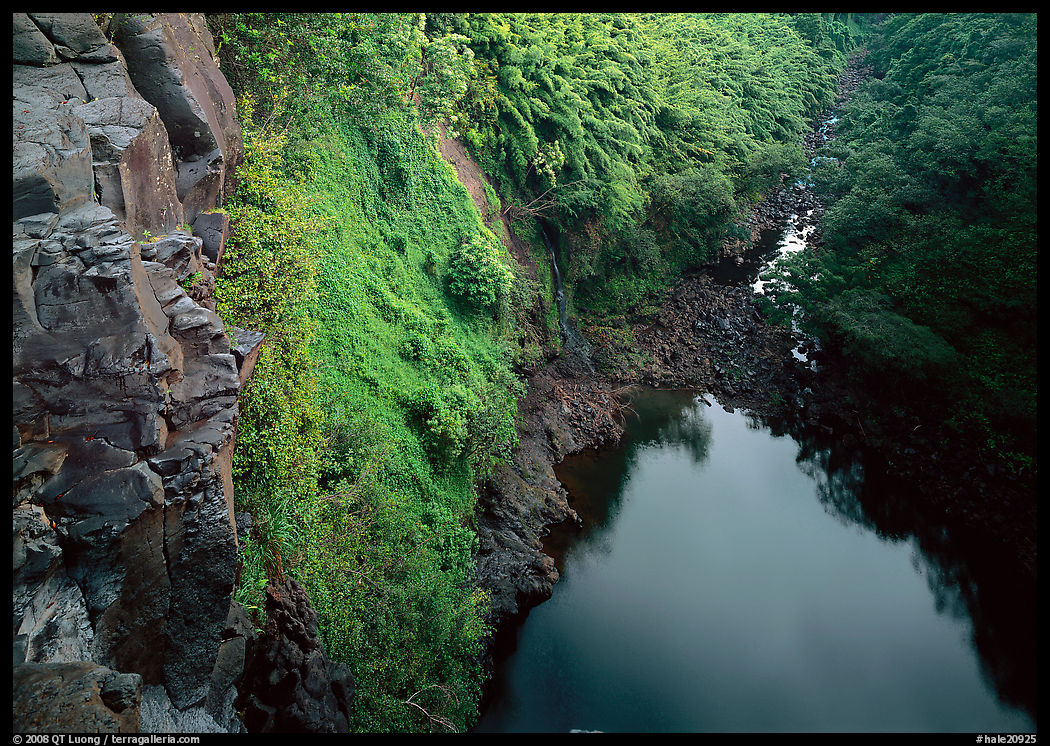
The trail takes you along a delightful tropical environment full of fragrance. Wild ginger abound. Goyave fruits were maturing, and my mother picked up quite a few delicious ones. She was planning to bring back some to California, but at the airport, agricultural inspection detected them through x-rays and confiscated them. Unusual plants grew everywhere, from small endemic ferns to an enormous banyan tree.
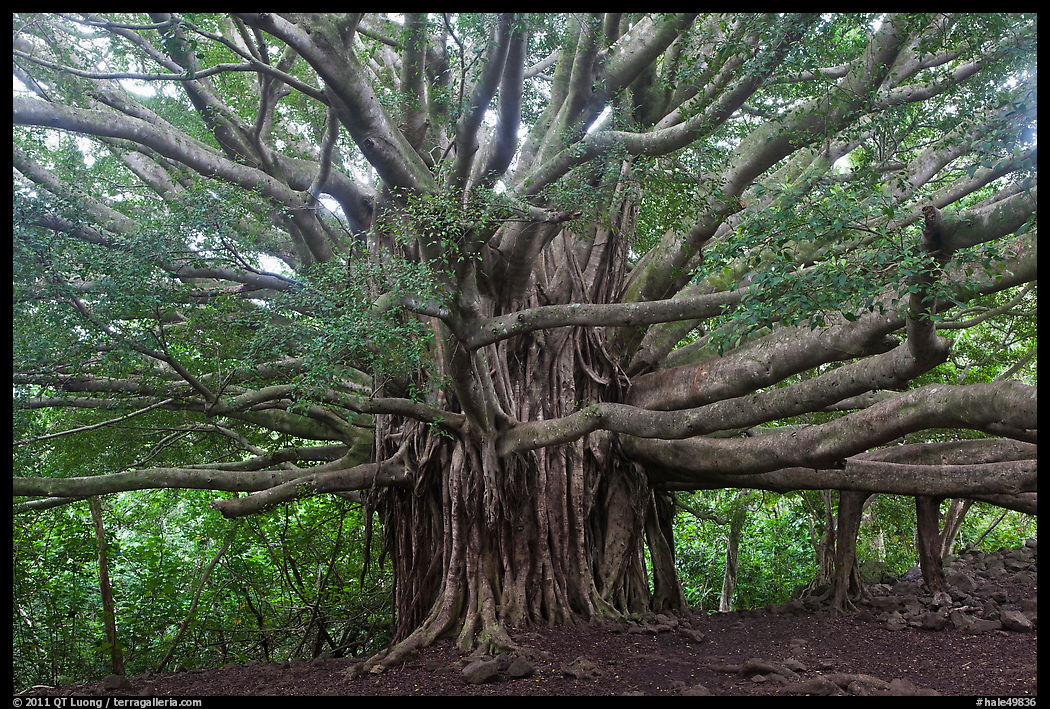
Bridges take you over Pipiwai Stream, offering views of several falls. At this point, at about a mile from the trailhead, you’ll enter the first of three bamboo groves, each growing progressively higher and denser. It ends up quite dark as the bamboo tower up to 40 feet over your head. With the wind causing the bamboo to make clanking sounds as they brushed against each other, walking through the forest path was a completely zen and magical experience. Nature’s chimes!
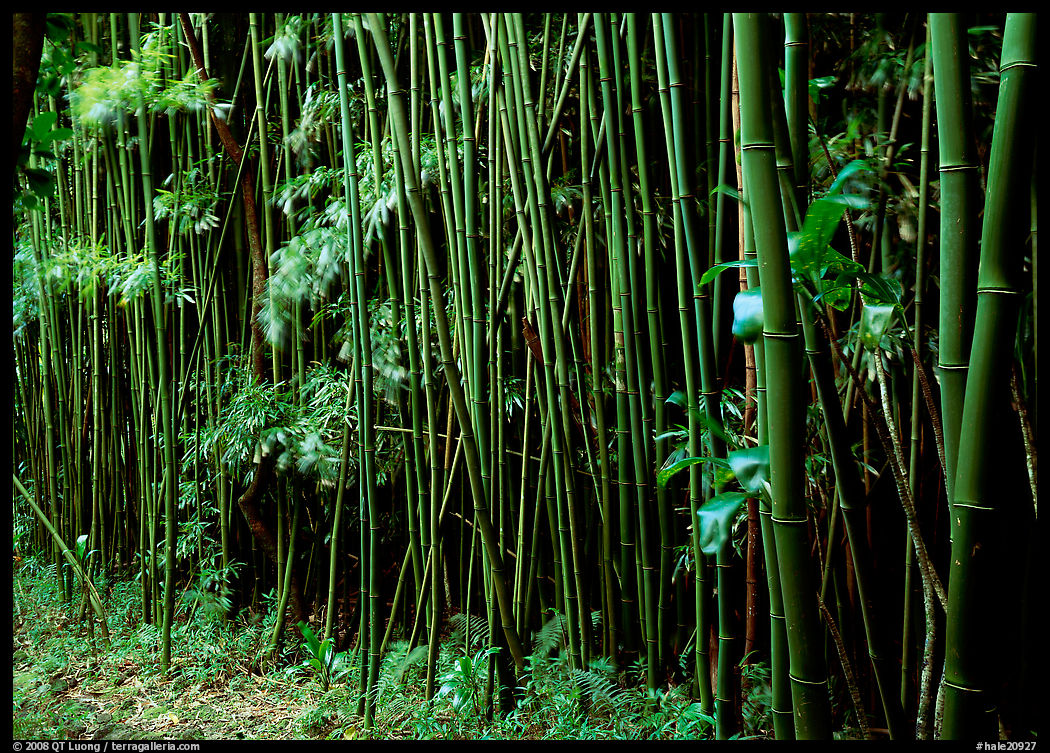
The Pipiwai Trail ends at the 400-foot Waimoku Falls, which drops along lush cliffs. It is maybe the most beautiful waterfall on the island of Maui and certainly the tallest one accessible from the ground. For a better view, I scrambled on the hill to the right of the falls. Framing tightly the waterfall without its brink or outlet pool and pointing the camera straight – with the aid of the large-format camera rise – to keep maintain the cliff’s verticality suggested a pure wall of green. However, as great as the waterfall is, it is the sum of sights on the trail that makes it so special, rather than the destination.
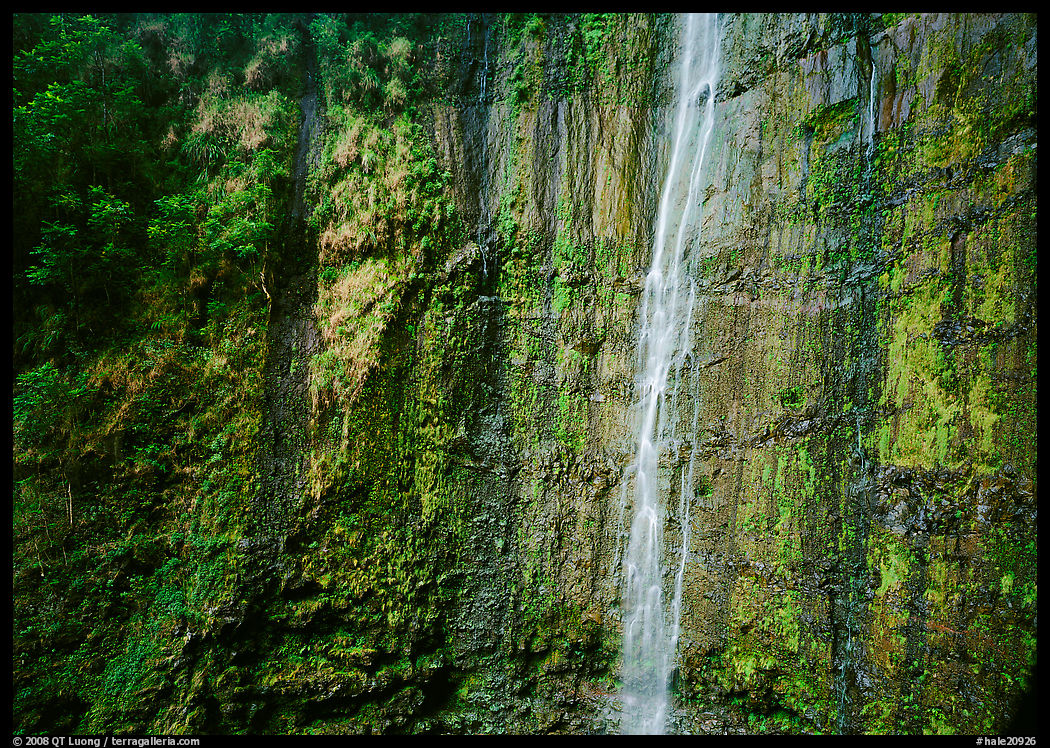
Logistics
The subjects encountered on this hike benefit from soft light. Since the tall bamboo makes the forest so dark, you may find a tripod useful, it also helps in photographing the moving water.The town of Hana, a dozen (very slow) miles away, has travel amenities, but typically for the island, there are no budget options. During my two previous visits to the area, I stayed at the nearby National Park Service campground, one of the most pleasant I have seen: a verdant grassy meadow without pavement directly overlooks the Pacific Ocean. There is no water at the campground, but you can refill your containers at the visitor center. Sites were available on a first-come, first-serve basis until the spring of 2022.
Now, like at many others, you need to make a reservation on recreation.gov. As an indication of the popularity of the campground, there is a limit of 3 nights stay per month. Reservations open up 30 days in advance. Planning a Maui trip to share the place with my family, when I checked the recreation.gov, except for one lone site, everything in the next 27 days was reserved. The closest campground outside of the park is at Wai’anapanapa State Park (a free account with the state of Hawaii is required to view the reservation system) and it even has 12 housekeeping cabins, but that facility is also popular. Unlike me, plan accordingly!


I was fortunate to have grown up on Maui. I’ve been to these places many, many times. Your images really show the beauty of that part of Maui. Thank you for sharing!
We were on this trail with family many years ago. Your beautiful photo reminds us of the best thing about these times.
European glory and even after